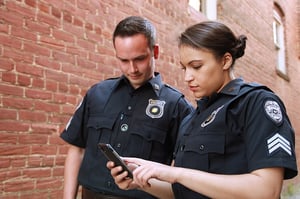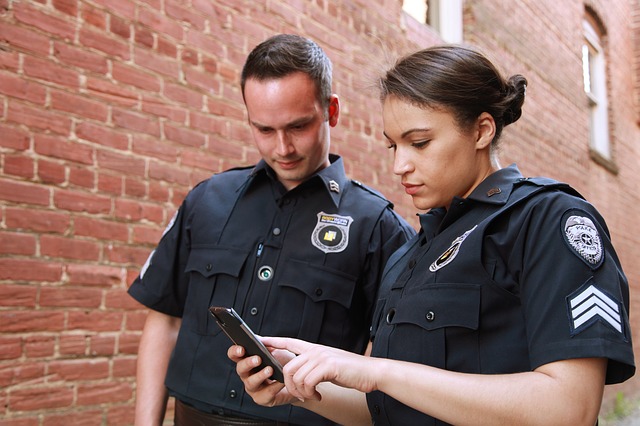Top Safety Risks for Children with Autism and How to Communicate with First Responders
Safety and preparation for emergency situations is a concern for any child, but especially for children with autism, who may be unable to communicate or respond correctly in emergency situations.
Accidental death for children with autism is three times as likely to occur compared to the general population. Asphyxiation, drowning, and suffocation are common causes of mortal injuries for children with autism, so having special safety rules and procedures in place connected to these injuries is essential. It is estimated that out of the children with autism who successfully wander from home or a safe environment, one third of these children are unable to communicate their name, phone number, and/or address to first responders.
The best way to ensure a child’s safety and prepare them for emergency situations is to identify the risks that are specific to that child and seek the proper resources and tools to maintain the child’s security.
Top Safety Risks in Children with Autism
Individuals diagnosed with ASD may have mild to significant social, emotional, communicative, and/or behavioral developmental delays. In a home, school, or community context, top safety risks for children with ASD include wandering/getting lost and difficulty communicating. For some children with ASD, their inability to communicate, inappropriate emotional or physical responses, or self-stimulating behaviors may appear uncooperative to first responders. Difficulty or inability to communicate appropriately pose a safety risk for children with autism.
Minimize Opportunities for Wandering
Within the home, it is important to identify potential triggers that may cause children to wander from their safe spaces. Recognizing stressful triggers, such as loud noises and bright lights within the home allow for the opportunity to act preventatively. Additionally, there are measures to take to secure the home to further ensure child safety. In homes, alarms can be installed on doors as well as child-proof locks on doors leading outside, and fencing can act as a physical barrier.
Create Relationships with First Responders
Developing a plan and having a continuous, active conversation with a child regarding their personal safety is important. Creating familiar relationships between children and first responders will help children to identify and feel comfortable with community members. It is important to recognize that in general, first responders typically receive little or no specific training working with individuals with disabilities.  Disclosure of a child’s diagnosis to local police, firefighters, and 911 call centers may help to establish a connection with the individuals who may one day be helping the child. When out in the public or community, if possible, establishing a “buddy system,” having an adult or another child hold the child’s hand and keep an eye on them as this will further help the child in being comfortable with others. Roleplaying daily situations (such as a trip to the grocery store) or emergency situations (if the fire alarm at home goes off) is an interactive way to involve children in becoming more aware of their personal surroundings. Setting clear expectations of behaviors and communicating openly during an outing will help the child feel more comfortable in the space.
Disclosure of a child’s diagnosis to local police, firefighters, and 911 call centers may help to establish a connection with the individuals who may one day be helping the child. When out in the public or community, if possible, establishing a “buddy system,” having an adult or another child hold the child’s hand and keep an eye on them as this will further help the child in being comfortable with others. Roleplaying daily situations (such as a trip to the grocery store) or emergency situations (if the fire alarm at home goes off) is an interactive way to involve children in becoming more aware of their personal surroundings. Setting clear expectations of behaviors and communicating openly during an outing will help the child feel more comfortable in the space.
Use Medical Alert Cards and Bracelets
For children who are non-verbal or are unable to communicate their name, address, or phone number, medical alert bracelets and wearable location tracking devices help children to remain identifiable to first responders and strangers. Paper handout cards can easily be created displaying the child’s information and be placed on a keychain on backpacks or jackets. In addition to including the child’s personal information, it is important to include guardian, family, or neighbor’s contact information.
Make Connections to Community Members
- local family members
- trusted neighbors
- local First Responders (law enforcement customs/immigration employees, police, firefighters, paramedics, hospital doctors and nurses, security personnel)
- school classroom peers, teachers, staff (office staff, janitors, crossing guards)
- regular/trusted employees of local stores (grocery store, convenience store, department store)
Resources for Helping Your Child Prepare
Familiarizing children with images of people in the community who are there to help (police, firefighters, doctors, etc.) is important in making your child comfortable with recognizing and eventually interacting with these individuals. Stages Learning Materials offers visual cards and games identifying these characters so that children may learn to recognize and identify these individuals.
“The Occupation Cards are especially good to discuss the people you interact with on a daily basis- Community helpers, career men and women, service professionals and more!”
“Discussing people in the community children encounter on a daily basis… Preparing children for people they will see (i.e. a visit to the doctor or dentist)”
“This vehicle themed classroom kit is a great way to introduce kids to different modes of transportation.” (Includes: bus, firetruck, ambulance, police car, tow truck, helicopter, etc.)
“Perfect for decorating your classroom or child’s bedroom. Also great for leading small group discussions in the classroom.” (Includes: bus, firetruck, ambulance, police car, tow truck, helicopter, etc.)
This article was based on the following research:
“Autism & Safety Facts.” National Autism Association.
Guan, Joseph, and Guohua Li. "Injury mortality in individuals with autism." American journal of public health 107.5 (2017): 791-793.
“Keeping Your Child with Autism Safe.” Safety.com, 6 Feb. 2019.
“Tips for First Responders.” Autism Society.





